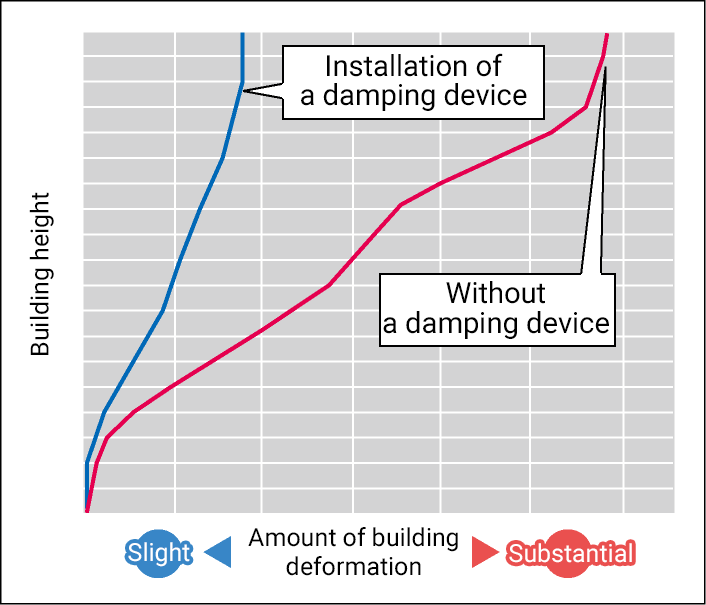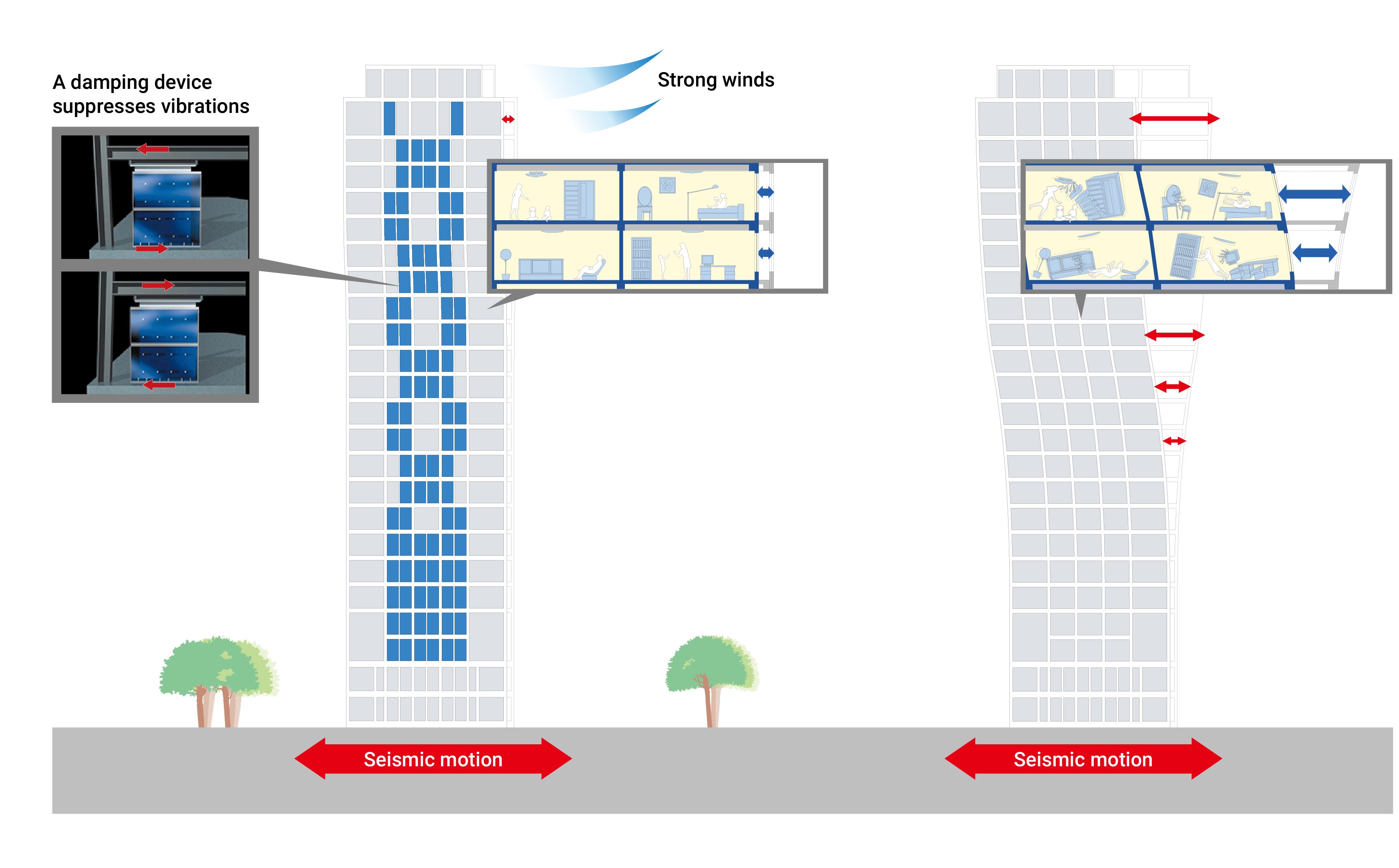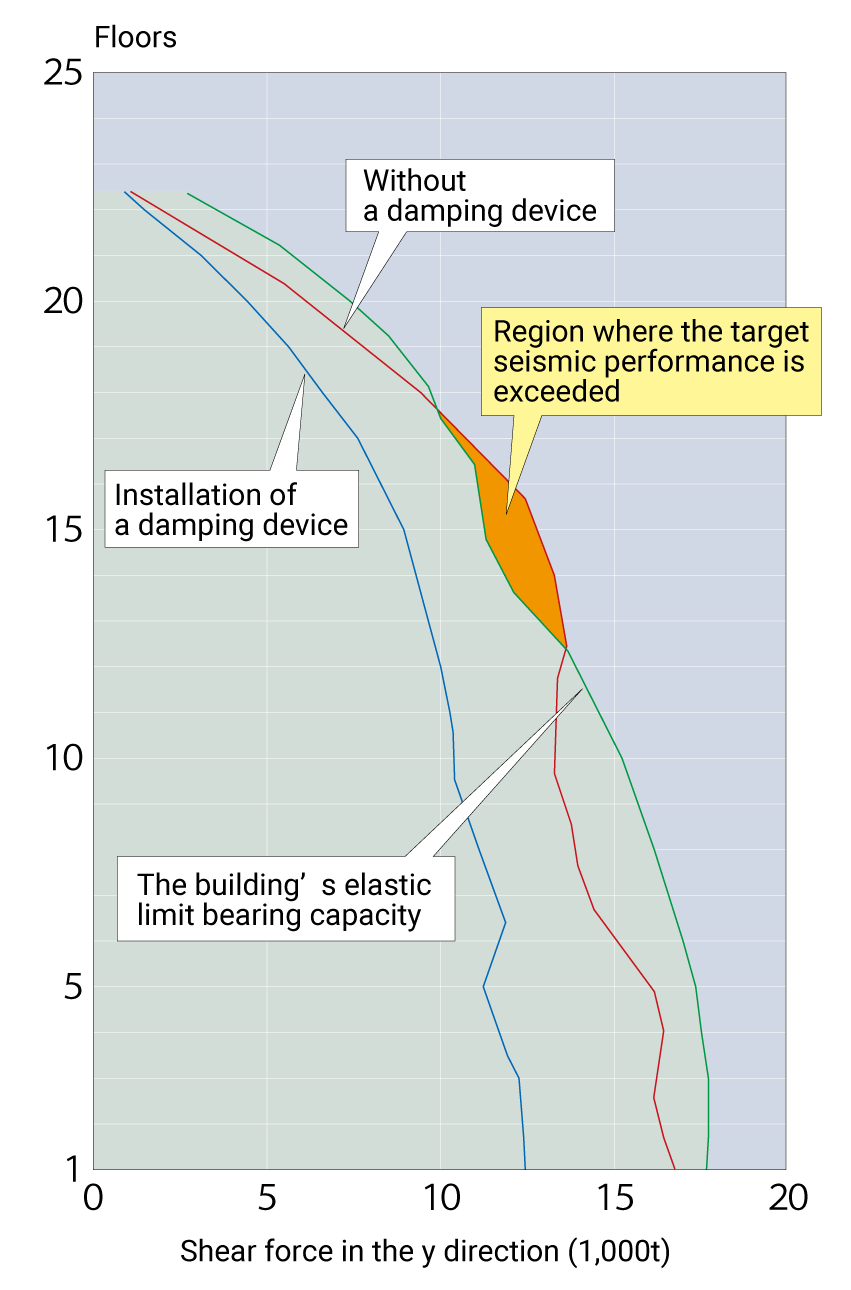This website uses cookies for a better browsing experience.
If you agree to the use of cookies, please click the "Agree" button.
Please refer to the Privacy Policy regarding the use of cookies on this site.
What is vibration control?
Vibration suppression is the key to vibration control.
High-rise buildings sway greatly during earthquakes and strong winds, so ensuring safety and livability is difficult even if the building does not collapse. Vibration control attaches a device that absorbs the energy of vibrations acting on the building to reduce shaking caused by earthquakes and strong winds. This both prevents damage to the building and it also protects people's safety and equipment to ensure habitability.
The amount of deformation proportional to building height with and without vibration control devices
Buildings have different natural periods depending on their rigidity and size, and they sway in accordance with these periods during earthquakes and strong winds.
A wall-type damper replaces swaying of the building with the relative motion of the damper and it absorbs the energy of vibration through the resistance generated in the process.

An image comparing shaking with vibration control and seismic resistance
In the event of an earthquake or strong winds, the upper floors of a seismic-resistant structure will sway more, which may cause furniture inside the building to topple over and damage finishing materials, resulting in greater damage.
Vibration control is a method of construction that suppresses shaking through the action of a vibration control device, thus reducing the impact on the building and furniture.

Response story shear force on a vibration control device
The importance of earthquake-proofing high-rise buildings has received considerable attention since the Great Hanshin-Awaji Earthquake of 1995, and many high-rise buildings use vibration control devices to absorb large shakes during earthquakes.
Installing a vibration control device allows the response story shear force during a level 2 earthquake (seismic intensity from more than 6 to 7) to be reduced to less than the elastic limit bearing capacity of the building, thereby increasing the extent of the building’s protection from damage, protecting human lives, and preserving building functionality.

Types of vibration control
Vibration control
Buildings have different natural periods depending on their rigidity and size, and they sway in accordance with these periods during earthquakes and strong winds. A vibration control device replaces swaying of the building with the relative motion of the device and it absorbs the energy of vibration through the resistance generated in the process.
For more information on the movement of vibration-controlled buildings and vibration control devices, please click here to view the video.

Seismic reinforcement (retrofitting)
Seismic reinforcement typically involves installing earthquake-resistant walls and reinforcing columns and beams in a building. In contrast, use of vibration control devices improves seismic resistance with as little modification to the building as possible. This has numerous advantages, including the ability to preserve the original artistry of historic structures and cultural assets and the ability to reinforce the building while it is still in use, while not sacrificing the building’s functioning.

Seismic resistance and vibration control for large roofs
Seismic resistance and vibration control for large roofs independently releases slight expansions and contractions, such as flexure due to structures with large open spaces and the dead weight of a large roof, as well as temperature changes. In addition, seismic resistance and vibration control disperses the inertial forces from the violent shaking of an earthquake that act on a large roof, protecting the structure.






